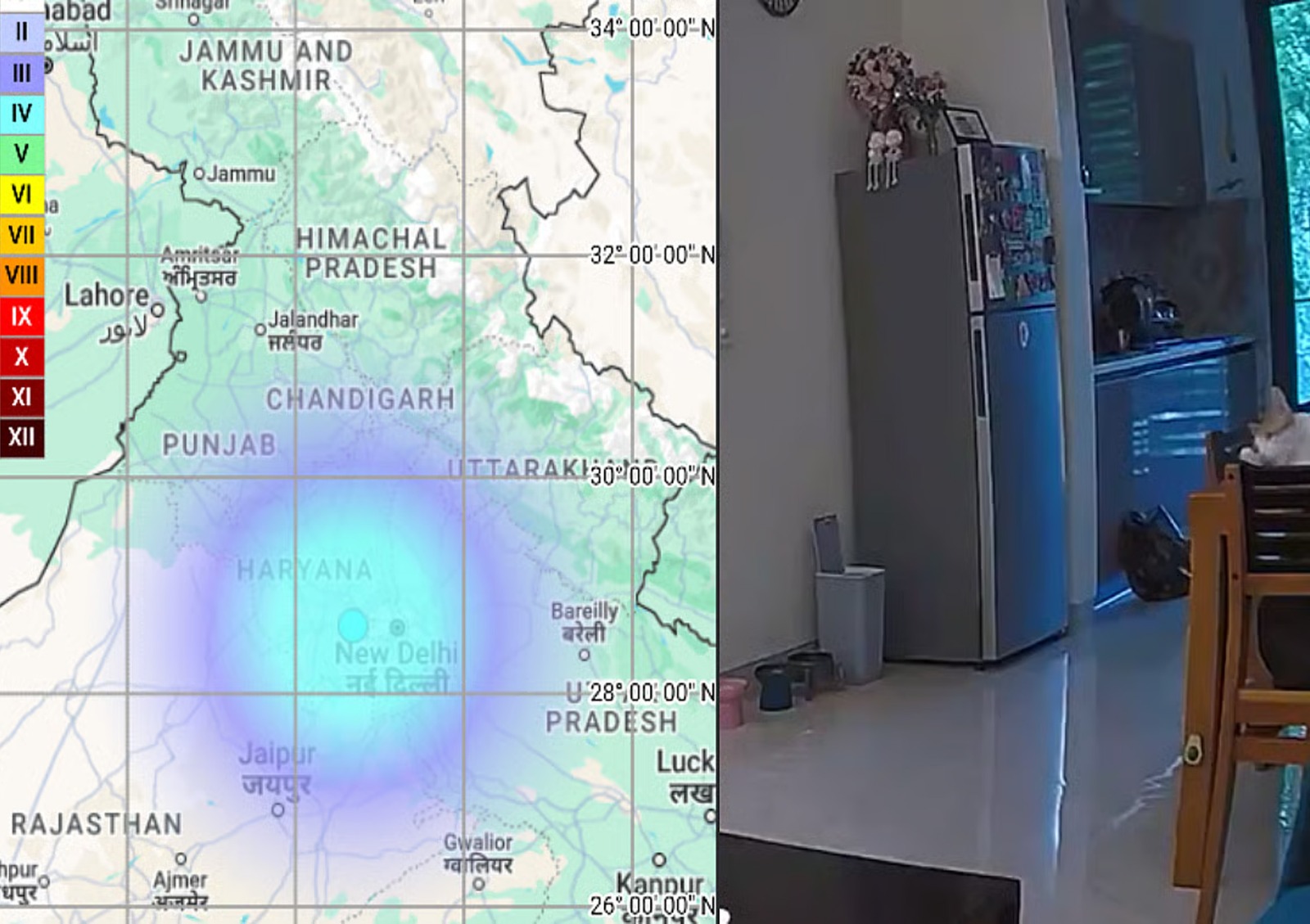
By Sulagna Halder
New Delhi:
On Thursday 9:04 am IST a 4.4 magnitue earthquake occurred near Jhajjar, Haryana with shaking felt in the vicinity of Delhi-NCR, the National Centre of Seismology (NCS) reported Tremors were also strongly experienced in Noida, Ghaziabad, Gurugram and Faridabad and parts of western Uttar Pradesh as well.
The earthquake that had a shallow depth of 10km depth caused intense shaking of the building and offices. People in the area reported the movement of such devices as computers and fans. In Gurugram, computers vibrated and alarm lights came on and people in offices rushed out ". An inhabitant in Noida reported that there were tremors which were strong to move fans and also even led to evacuations.
Although there was an effect, law enforcers confirmed that there were no casualties or destruction of buildings. Nevertheless the quake resulted in massive panic where schools suspended classes, markets stalled, buildings emptied and the postponement of traffic in several roads with pedestrians flooding the streets.
Certain cases of spontaneous evacuation of the road were reported: commuters got out of cars, and shopkeepers went outside to investigate the situation. Commercial establishments in the inner regions of Delhi went on short breaks when security measures automatically opened rush counters.
The location of the quake based on the coordinates of the epicentre, which is 28.63 N, 76.68 E, is in line with the district of Jhajjar, therefore, indicating that the epicentre is located there. Authorities insisted that shallow depth quakes may sound more explosive and cause strong tremors even at moderate magnitudes This conforms to the position of Delhi in the Seismic Zone IV, which reports medium to high seismic threat.
The Delhi Disaster Management Authority (DDMA), in the initial reaction, provided safety guidelines, as per the protocol of safety procedures, that is, in accordance with the drop, cover and hold on, and also provided instructions to residents to keep emergency kits and remain prepared . The National Disaster Response Force (NDRF) was sent along with local fire departments to inspect critical infrastructure such as schools, hospitals or bridges.
There are no reports of aftershocks at the moment, however, the seismologists warn that such may be experienced albeit of lower magnitudes. Historical registries demonstrate that the region is subjected to the moderate quakes: In February, a 4.0 magnitude tremor was recorded in Delhi, with similar ones being observed in 2020.
New safety measures in the city are reconsidered. Theoreticians such as engineers and other structural experts propose a long term solution to retrofitting of older buildings, strengthening the adherence to the earthquake building requirements, and the designing of someone drills in schools and office complexes helper.
There were no damages but the quake on Thursday highlights the fact that the city of Delhi and surrounding areas are vulnerable. The government has promised transparent inquiry into the causes of the tremor and prompted greater preparedness. They emphasised on the investment in seismic resistant infrastructures, large scale education and training of the people about disaster response and coordination improvement among the disaster management agencies, to prevent future risks in the known seismic hot spot.